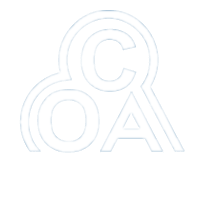The shoulder is one of the largest and most complex joints in the body. It is formed by the upper arm (humerus) fitting in to the shoulder blade (scapula) like a ball and socket. The collar bone (clavicle) assists in the formation of the shoulder joint. The rotator cuff is a collection of muscles and tendons that surround the shoulder, giving it support and allowing a wide range of motion. A cuff of cartilage called the labrum forms a cup for the ball-like head of the humerus to fit into. Due to the complexity of this joint, injury is very common.
Shoulder injuries are frequently caused by athletic activities that involve excessive, repetitive, overhead motion, such as swimming, tennis, pitching, and weightlifting. Injuries can also occur during everyday activities such washing walls, hanging curtains, and gardening. Occupations involving hands above shoulders and repetitive motions are common, well known risks associated with shoulder pain and injury.
Chronic Shoulder Instability
Shoulder instability occurs when the head of the upper arm bone is forced out of the shoulder socket. This can happen as a result of a sudden injury or from overuse.
Once a shoulder has dislocated, it is vulnerable to repeat episodes. When the shoulder is loose and slips out of place repeatedly, it is called chronic shoulder instability.
Impingement
Impingement is caused by excessive rubbing of the shoulder muscles against the top part of the shoulder blade, called the acromion. Impingement problems can occur during activities that require excessive overhead arm motion. Medical care should be sought immediately for inflammation in the shoulder because it could eventually lead to a more serious injury.
Biceps Tendinitis
Biceps tendinitis is an inflammation or irritation of the upper biceps tendon. Also called the long head of the biceps tendon, this strong, cord-like structure connects the biceps muscle to the bones in the shoulder. Pain in the front of the shoulder and weakness are common symptoms of biceps tendinitis.
Rotator Cuff Injury
The rotator cuff is a group of muscles and tendons that surround the shoulder joint, keeping the head of your upper arm bone firmly within the shallow socket of the shoulder. A rotator cuff injury can cause a dull ache in the shoulder, which often worsens when you try to sleep on the involved side.
Rotator cuff injuries occur most often in people who repeatedly perform overhead motions in their jobs or sports. Examples include painters, carpenters, and people who play baseball or tennis. The risk of rotator cuff injury also increases with age.
Dislocation
The most common shoulder injury is dislocation as a result of sudden impact. The shoulder hits a hard surface and the bone is pushed out of the socket. The aftermath should be immediate and obvious. The person may have no control over the arm. It may hang limp and present in an angular bump in the shoulder area. The onset of a sharp pain and a “pop” are often reported. Treatment involves utilizing advanced image techniques such as MRI to determine the direction of dislocation and “popping” the bone back into the socket as soon as possible. From there on out, the joint can be iced and the arm placed in a sling for comfort. Physical therapy helps to reduce future dislocation.
Chronic Pain
This is when a patient experiences regular aching pain moving their arm away from the body and/or rotating the shoulder (motions like throwing a baseball or swinging a tennis racket). A reduction in shoulder strength when lifting may also present. This may be a sign of a torn rotator cuff. The rotator cuff is composed of a series of muscles and tendons essential in maintaining full control and range of the shoulder joint. We often treat partial tears to the tendon with a combination of exercises, medicines, and sometimes injections. However, in cases of a full tear, arthroscopic surgery—a minimal invasion technique involving only small incisions—can be used to repair the torn tendon and restore strength and motion.
Arthritis
(the gradual wear and tear on the cartilage of the shoulder over time) can also be a cause of chronic pain. This can occur in the shoulder joint itself or in the AC joint (knob at the junction of collarbone and shoulder). In both cases it’s managed with therapy and/or injections after an MRI is used to make the diagnosis.
Frozen Shoulder
Frozen shoulder, also called adhesive capsulitis, causes pain and stiffness in the shoulder. Over time, the shoulder becomes very hard to move. The shoulder capsule thickens and becomes stiff and tight. Thick bands of tissue — called adhesions — develop and in many cases, there is less synovial fluid in the joint.
The hallmark signs of this condition are severe pain and being unable to move your shoulder — either on your own or with the help of someone else.
Fractures
Shoulder fractures can result from a fall on the shoulder, a motor vehicle accident, contact sports, etc. Fractures commonly involve the clavicle (collar bone), proximal humerus (top of the upper arm bone), and scapula (shoulder blade).
Biceps Tendon Tear at the Shoulder
Your biceps tendons attach the biceps muscle to bones in the shoulder and in the elbow. If you tear the biceps tendon at the shoulder, you may lose some strength in your arm and have pain when you forcefully turn your arm from palm down to palm up.
Shoulder Replacement
In cases of severe injury or chronic pain that reduces quality of life, we can fully replace the shoulder joint with an artificial joint fashioned out of metal or plastic. This is, of course, a complex surgery, but the concept behind it is simple. The ball at the top of the shoulder is removed and replaced with the artificial joint. The replacement joint is then secured to the upper arm bone by a series of plates and screws. If there are causes of pain on the cup side of the joint, this is capped or smoothed.
The shoulder is vital to performing daily tasks as well as athletic ones and any irregularities that may be causing you pain should be assessed by medical professional to prevent further damage and restore reduced movement.

